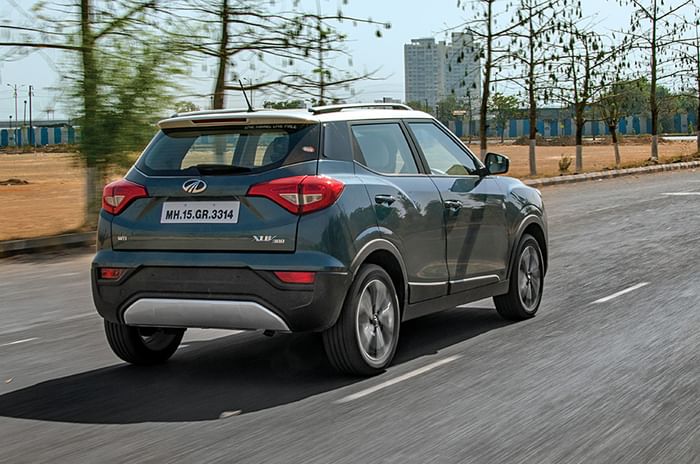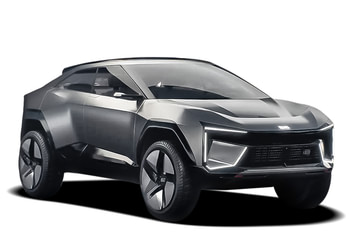2019 Mahindra XUV300 review, road test
Jointly developed by Mahindra and SsangYong, this Brezza-rivaling sub-four-metre SUV is high on appeal and features.
Published on Mar 28, 2019 06:01:00 AM
91,344 Views
Follow us on


Bright colours, a pleasing design and high-quality materials give the interiors a genuine premium feel.

Boot is smaller than many premium hatchbacks, and loading lip is high.
Internationally, the Tivoli is available with a set of 1.6-litre petrol and diesel engines. In India, however, the XUV300 gets a 1.2-litre turbo-petrol and a 1.5-litre diesel engine, both of which are developed and tuned in-house by Mahindra. The 1,197cc, three-cylinder, all-aluminium petrol unit is the same one that made its debut on the KUV100, but it has been heavily re-engineered here. It also gets a waste-gate turbocharger for stronger performance, so power and torque have been bumped up to 110hp and 200Nm, respectively. Right from the get-go, this engine feels very refined, with zero vibrations, and it remains silent all throughout, with just a faint thrum at higher revs. What’s nice is that it is very driveable, and even before the turbo starts singing, performance is adequate; so it’ll pull away from a speed-breaker with ease in second gear. At crawling speeds though, the petrol demands conscious modulation of the accelerator and clutch for a smooth drive. Spin it quicker and there’s a strong surge in performance at 2,200rpm. Few might like this spike, as it delivers that ‘feeling of power’, but as a family car, this punch feels a bit too spikey. The engine feels strong until 4,200rpm and the meaty mid-range makes driving on the highway effortless. It revs to a modest 6,000rpm, but power tapers off sharply in the last 1,800rpm and progress gets slow. Engine calibration isn’t completely sorted because when you lift off the throttle, the engine continues to accelerate for a split second, which can catch you unaware.

The diesel is the same 1,497cc, four-cylinder unit that also powers the Marazzo, but in the XUV300, it gets an e-VGT (electronic variable geometry turbocharger) and it makes 117hp – 6hp lesser than the heavier Marazzo – but max torque is still 300Nm from 1,500-2,500rpm (the torque in the Marazzo is spread from 1,750-2,500rpm). The first four gear ratios are identical to the Marazzo’s, but the fifth and sixth are a bit taller for better efficiency. Being nearly 250kg lighter than the Marazzo and having the same torque, the XUV300 diesel feels a lot more responsive and stronger. This engine is very driveable in the city as it pulls cleanly from idle. Also, there’s no problem shifting up earlier, as there’s sufficient pulling power. The meat of the powerband is between 2,000 and 3,500rpm, where performance is the strongest. Spin the engine beyond 3,800rpm and it runs out of breath, and because the top-end performance is weak, you have to shift up quickly – especially while overtaking fast-moving traffic – to stay in the powerband.

Even during our acceleration tests, the diesel returned the best times with upshifts around 3,800-4,000rpm, rather than holding on until 4,200rpm. With an extra 100Nm of torque on offer, the diesel’s performance is significantly better than the petrol’s, both outright and in-gear acceleration. Step into the diesel XUV300 after the petrol and what’s surprising is that it feels just as refined. In our sound tests, the diesel proved to be quieter than the petrol (except while idling), and only when revved beyond 3,500rpm did the diesel rattle become audible.

The clutch is light on the petrol and diesel variants. However, the clutch pedal travel is unusually long, and judging the bite point could take some getting used to. The 6-speed manual gearbox is smooth and slick to operate, despite the tall gear lever and long throws.
Copyright (c) Autocar India. All rights reserved.


















Comments
Member Login
Personal Details
No comments yet. Be the first to comment.